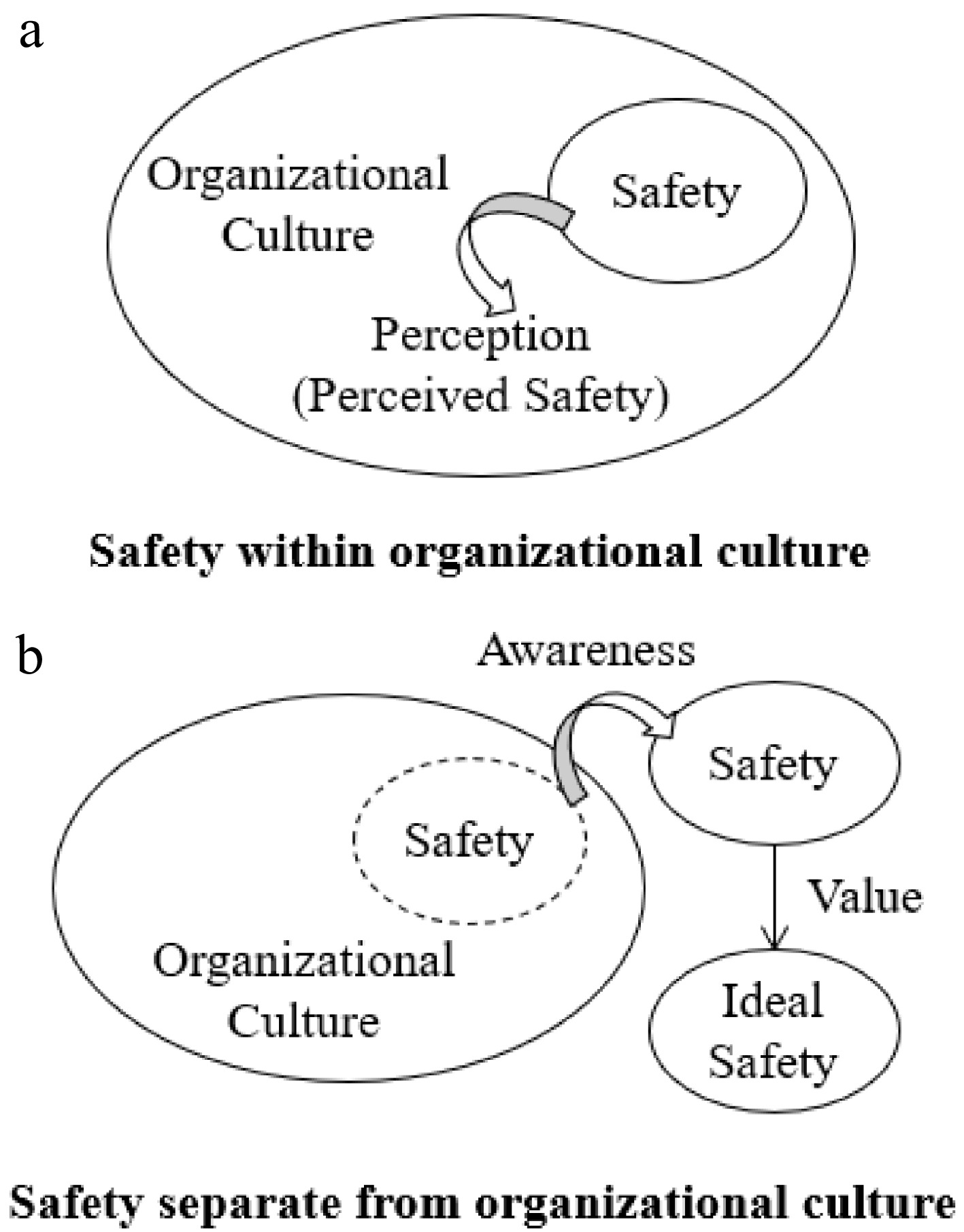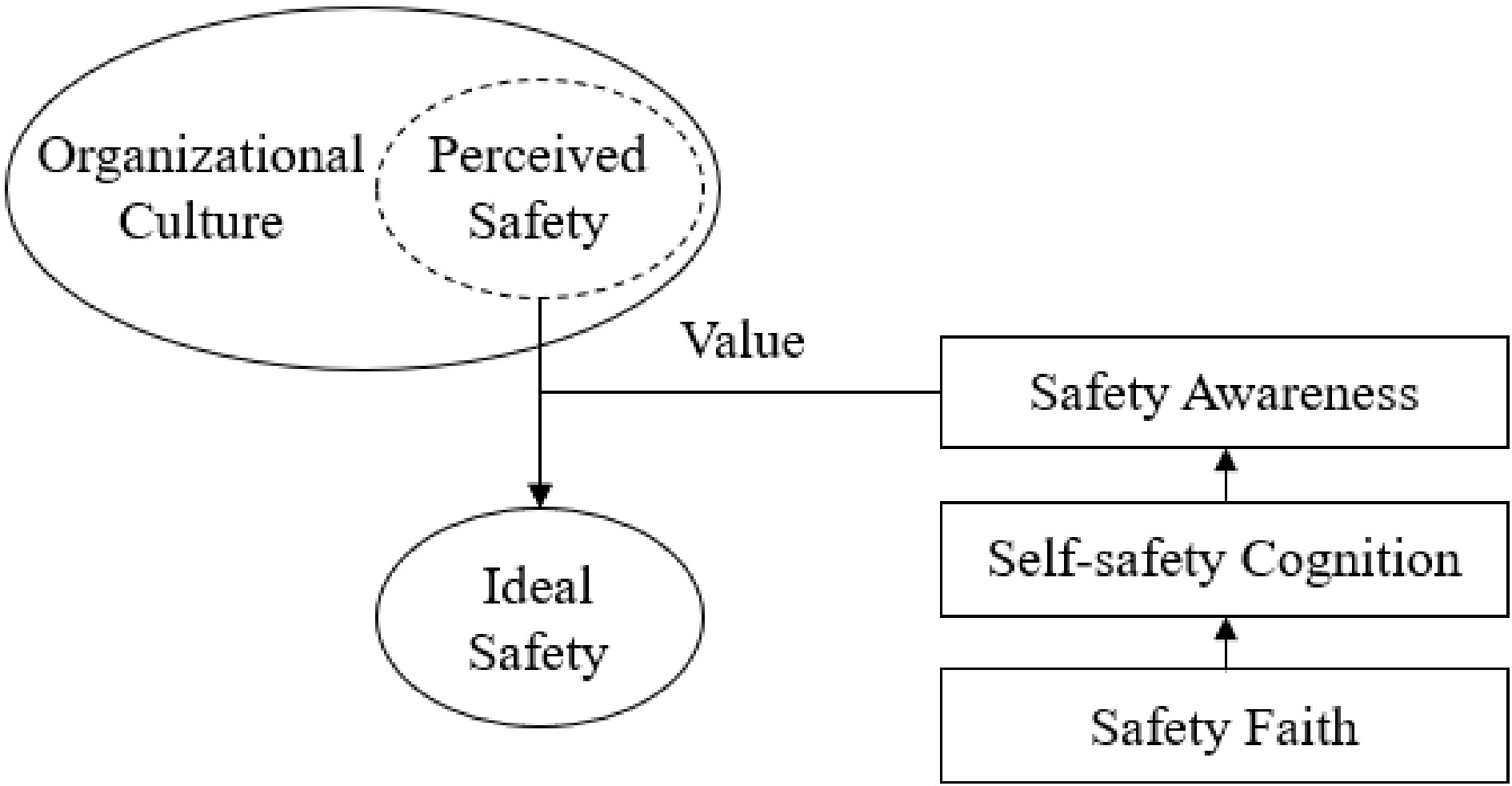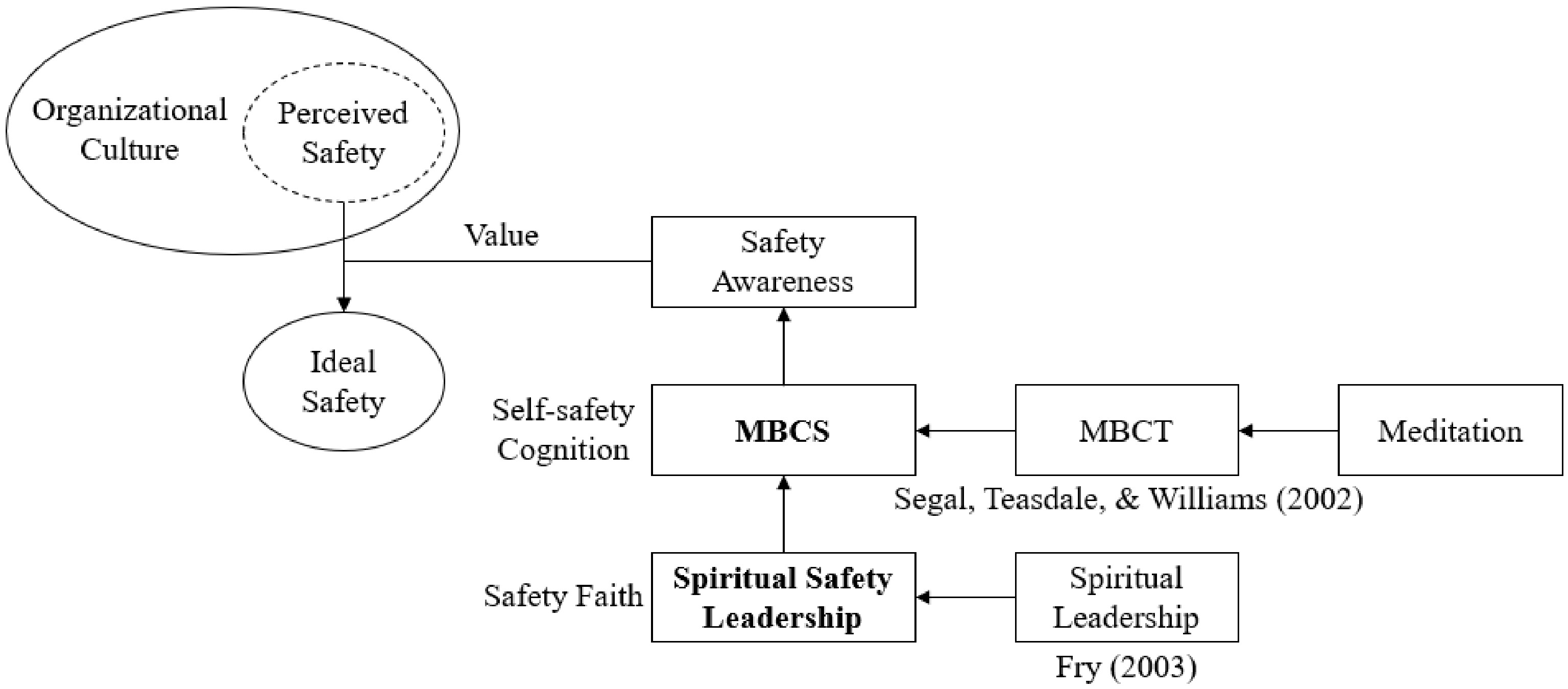-

Figure 1.
Change of the perspective on safety within organizations.
-

Figure 2.
Hofstede's 'mental programming'.
-

Figure 3.
Basic concept for voluntary safety practice.
-

Figure 4.
Framework for voluntary safety practice.
-

Figure 5.
Mechanism of MBCT and MBCS.
-

Figure 6.
Fry's spiritual leadership model.
-

Figure 7.
Spiritual safety leadership model.
-
MBCT MBCS Object Individual Organization Chronic & Relapse of Depression Continuous Accidents Discrepancy Desired State
(Based on Personality)Perceived Safety
(Based on Organizational Culture)Present State
(Normal State)Ideal Safety
(Ideal & Universal Value)Pattern Depression Pattern
(Habitually React)Dysfunctional Pattern
(Culturally React)Mood Disorder of Mood
(Pessimistic)Disorder of Working Mood
(Compulsive)Result Depression Unsafe Act & Accident Core Skill Mindfulness Moment-by-moment Awareness Moment-by-moment Safety Awareness Attribute Self-compassion Love Purpose Preventing Relapse of Depression Preventing Recurrence of Accident Table 1.
Main content of MBCT and MBCS.
Figures
(7)
Tables
(1)